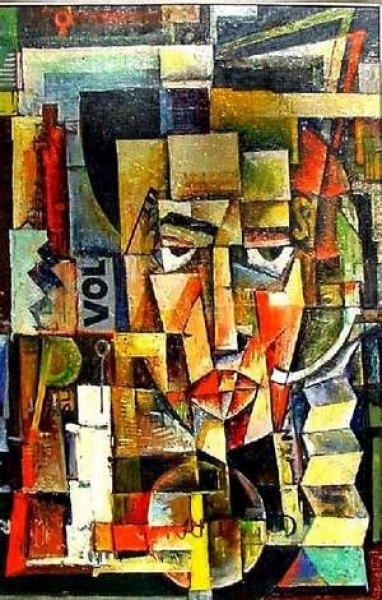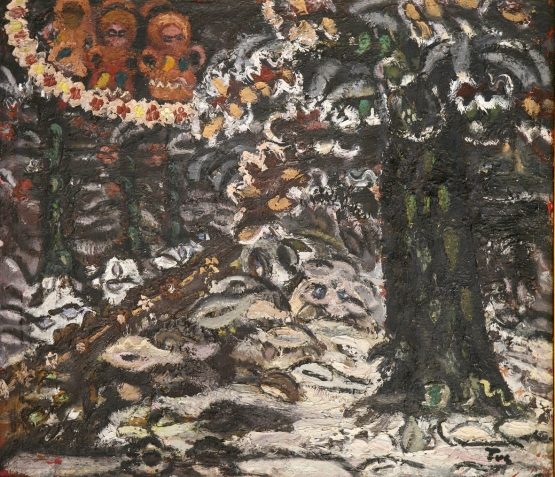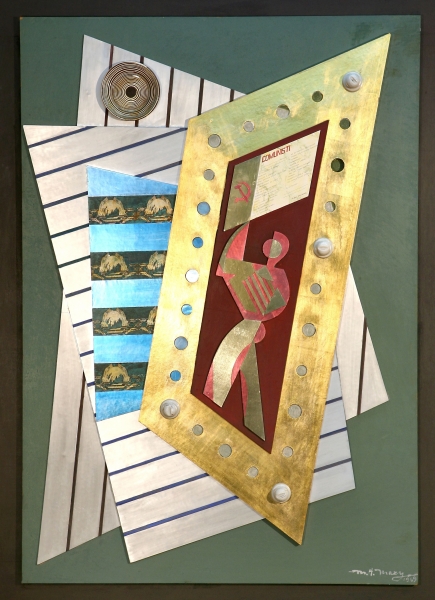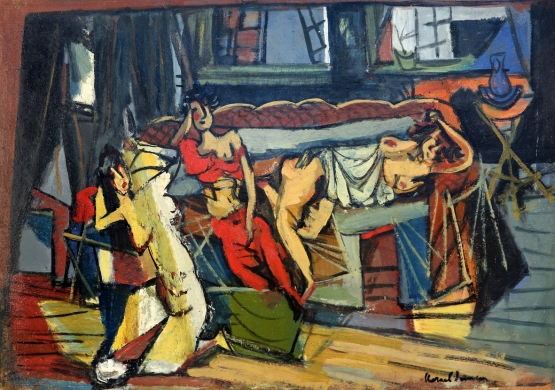The project Colours of the Avant-Garde, developed by The Romanian Cultural Institute consists in a comprehensive exhibition targeting the tense relationship between avant-garde and tradition in the first half of the 20th century. 70 paintings selected from 9 Romanian museums build up an investigation on the political, cultural and visual conditions of the emergence of the local avant-garde and its development until the late 1950s.
Starting from the mature modernism of Expressionist and Post-impressionist works around 1910, the show points to the both traumatic and utopian artistic experiences in the aftermath of the World War One. The historical turn propelled a radical break-up and the imposition of powerful avant-garde figures such as Arthur Segal (future leader of Novembergruppe in Berlin), Marcel Iancu (grounding father of Zurich Dada, together with Tristan Tzara), Hans Mattis-Teutsch, the abstract painter connected to both Der Blaue Reiter and Bauhaus movements, and with Hungarian, German and Romanian avant-garde circles, as well as M.H. Maxy or Victor Brauner, later on a significant representative of French Surrealism.
The incipient avant-garde movement confronted almost from its beginning the raising traditionalism centered on vernacular values. The militant autochthonism of the “nationally specific art” got mainly religious and militarist overtones. At its core there was the idealized figure of the local peasant, a paragon of spiritual resilience, strength, and historical firmness. The cohabitation, mutual hybridization and confrontation of the blossoming avant-garde and the polemical traditionalism configured together what one could call the moderate modernism of the inter-war visual culture in Romania, characterized by a vivid, disputed dialogue.
Colours of the Avant-garde shows the whole range of interferences and exchanges in the visual culture of the inter-war period, ranging from the political-ideological to the ethnic ones. The inter-war art scene in Romania was not characterized by a cohesive, dominant culture. Instead, a puzzle of diverse and divergent, multicultural idioms flourished. Colours of the Avant-garde reflects the kaleidoscopic feature of the various visual worlds of the time, rooted in different and complementary traditions. The show presents surprising Armenian artists such as Apcar Baltazar, interested in the striking, extreme figures of the day, be them the revolted peasants or the parading whores, together with prominent German artists such as Hans Eder, mirroring the cultural particularities of Germans from Transylvania, living in introvert, urban communities stamped by bourgeois values, and Hungarian artists such as Sandor Ziffer and Sandor Szolnay, connected to the seminal Nagybanya (Baia-Mare) School, fascinated by the ecstatically mythologized local landscapes. Jewish artists such as Brauner, Maxy and Iancu (Janco) propel a new perspective on the dynamics of modern, dizzying and amazing city life, while Romanian artists such as Ressu, Sirato and Theodorescu-Sion tried to outline a response, idealizing the peasant and the agrarian world.
The mutual influences, emulations, provocations, imitations, interpretations, criticism, or even parody, was the natural outcome of the living inter-cultural dialogue that finally has build up the diverse and substantial, modern visual culture in inter-war Romania.
Curator:
Erwin Kessler















